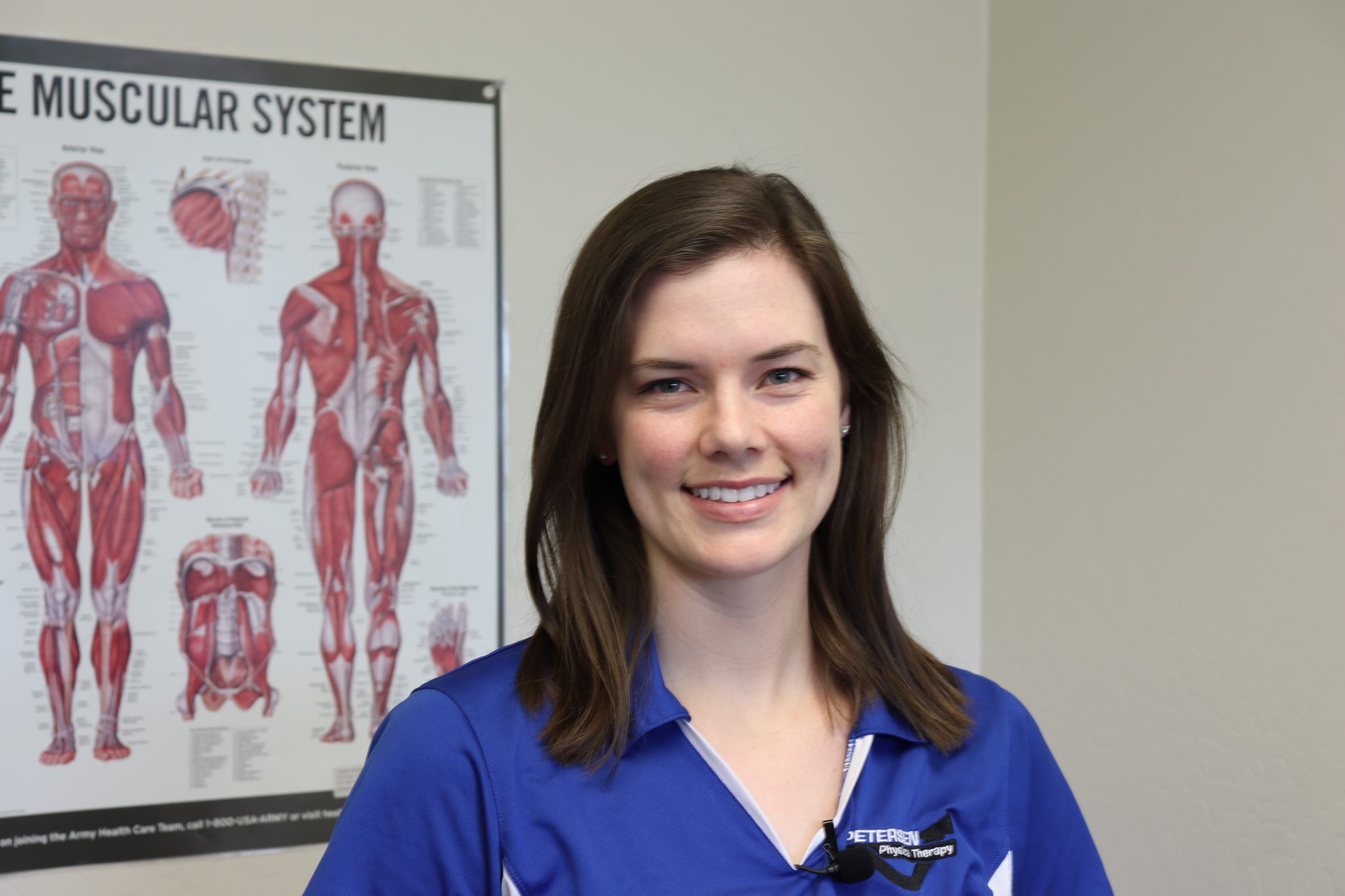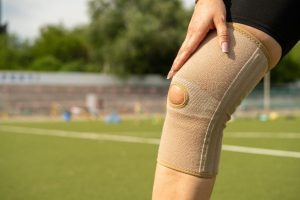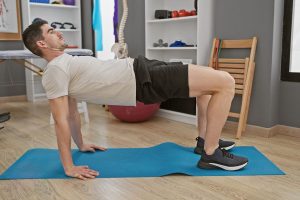Have you ever experienced that “kink” in your neck? The feeling is awful – waking up with a sore or stiff neck knowing you did nothing out of the ordinary to bring on your pain. If you’re wondering how to get rid of neck pain from sleeping wrong, holding a bad posture at work, or getting a “kink” from a sports or job activity, look no further than this 3-minute solution!
If you’re like most people, you will suffer through the pain momentarily and may resort to a heating pad or Tylenol at first. However, what can someone do to make sure this pain goes away and stays away? Today we will be discussing a two-minute plan to help relieve your neck pain.
Neck pain is more prevalent than most people think. According to this study on neck pain, about 50% of people will have some degree of neck pain throughout their lives. Knowing how to combat these symptoms before they affect your daily life will be important for long-term success.
Potential causes of neck pain
There are many causes of neck pain. One 2017 study looked at the most common risk factors for neck pain. Check the list below – how many of them are present in your life?
Posture / Work Environment
If you find yourself sitting at a desk, you may have noticed that you have a forward head posture or “text neck.” This is caused by people leaning forward to look closer at their screens/work tasks due to an inefficient work setup. Studies have confirmed the correlation between this neck position and the prevalence of neck pain. The reason is clear: this position increases the compression of the cervical spine with possible contributions to their symptoms.
Muscular tightness / lack of mobility
Another area of cause is muscular tightness or hypertonicity. If you are someone with a high-stress job, in a heavy lifting environment, or constantly picking up unwieldy items, your lifestyle may increase the muscular tone in your cervical stabilizers (neck muscles) causing increased pain.
Weakness
Along with the factors listed above, weakness in the lower trapezius and surrounding shoulder musculature can contribute to your symptoms. It is important to have the proper strength to decrease possible pain.
Physical Trauma
Those that have suffered from a motor vehicle accident are also prone to neck pain. Any trauma to the cervical spine results in muscular guarding or “fight or flight.” Our body goes into “protection mode” to bring us safety against our environment, even after the accident or traumatic event is over.
Degeneration or osteoarthritis
An additional area of cause for neck pain is degenerative changes that happen over time leading to increased cervical discomfort and decreased active range of motion.
Diet and lifestyle
Lastly, having a proper diet and active lifestyle drastically reduces your possibility of musculoskeletal pain. These are a few areas that may be contributing to your neck pain.
How to fix neck pain
Now that we know where your symptoms might be coming from, our next step is to address possible resolutions. Completing stretches to alleviate any built-up tension will be helpful. We’ve included two stretches to help relieve tension in the chest, shoulder, upper traps, and levator scapulae. We’ll finish by strengthening the surrounding musculature, which is important for long term success.
We’ve only got three minutes to work with, so we recommend you go from exercise to exercise quickly and repeat this often until symptoms subside:
Check workstation ergonomics
The first thing to do is check your workstation and see if this is ergonomically correct for you. Your elbows, hips, and knees should all be sitting at 90 degrees, your keyboard should be easily within reach, and low back supported.
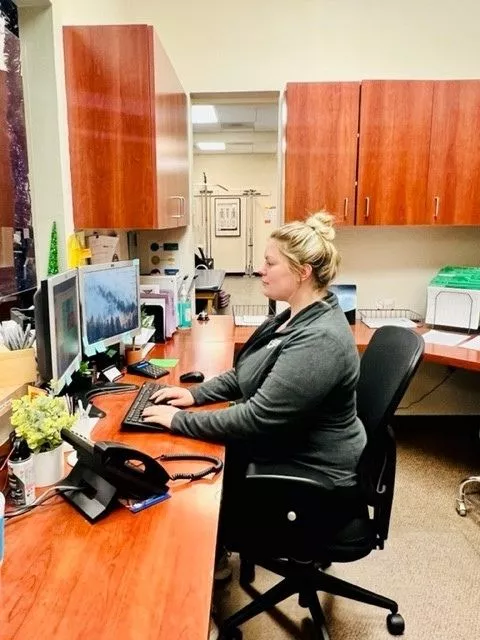
You can refer to this post for more information on work station ergonomics and good posture. For extra credit, take a look at the sleep position portions of that article as well. Sleep on your stomach or side can cause neck kinks as well.
Corner Stretch
Stand in a corner as pictured below and stretch your pecs and the front of your shoulder. Continue for about 30 seconds. You may have to play with your hand position until you find a position that is comfortable. Don’t fight through pain on this one!
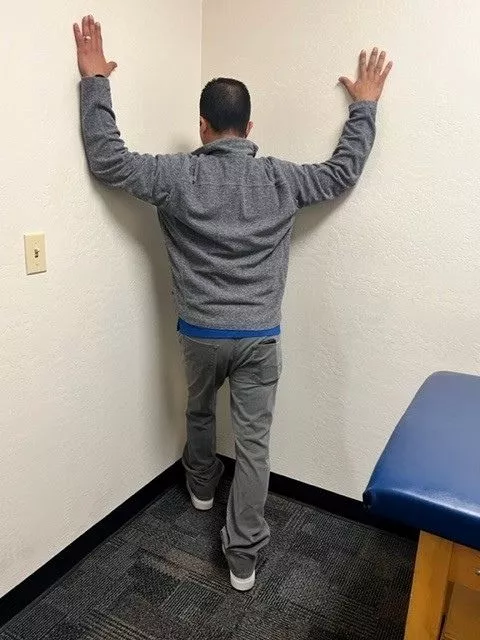
Upper trapezius and levator stretch
Sitting in a chair, grab one side of the chair seat with one hand and wrap your other hand around your head with the other (see picture below). Turn your head slightly and gently stretch down and to the side as pictured. Again, don’t fight through pain here – ease into it and let the muscles lengthen. Spend 30 seconds per side.
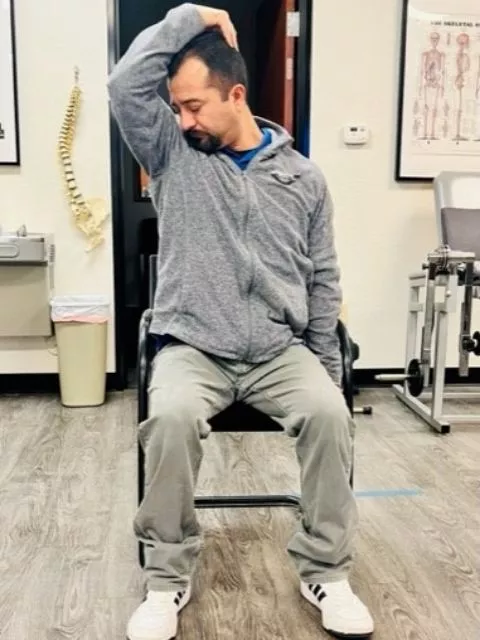
Shoulder extensions
Place a band over a door or otherwise affix it to something just above your face height. With straight arms, grab the band and pull it down in an arc towards your waist as pictured. Repeat for up to three sets of 10.
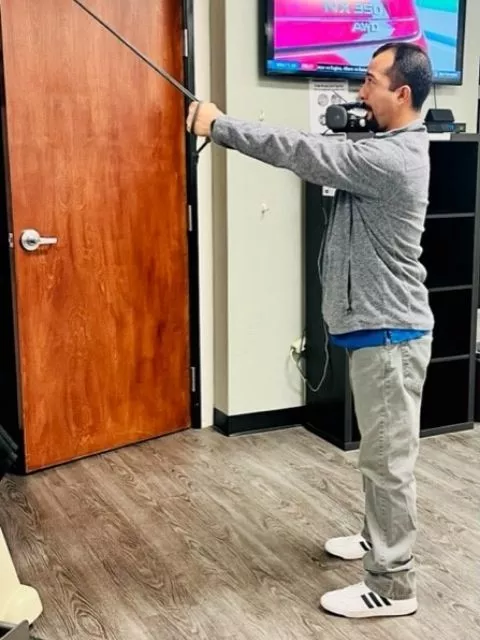
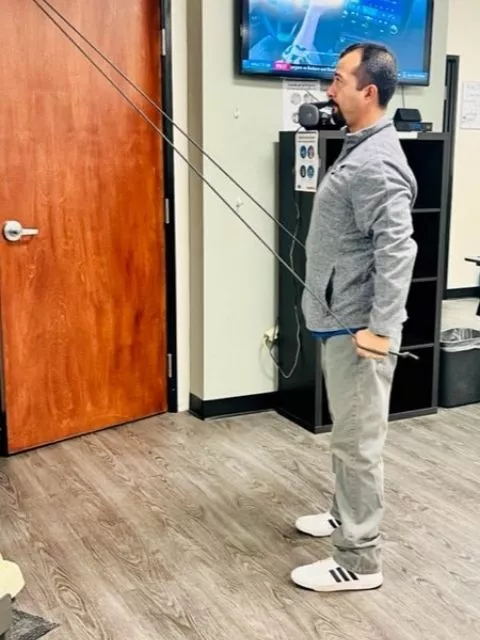
Rows
Affix a band to a door handle or something directly in front of you, at around belly button height. Grab each end with a straight arm and pull the slack out of the band. “Row” the band back towards your sides at about belly button height. Imagine pulling through the elbows.
You should feel your middle and upper back muscles contract. If you don’t, play with the band height until you do. Repeat for up to three sets of 10.
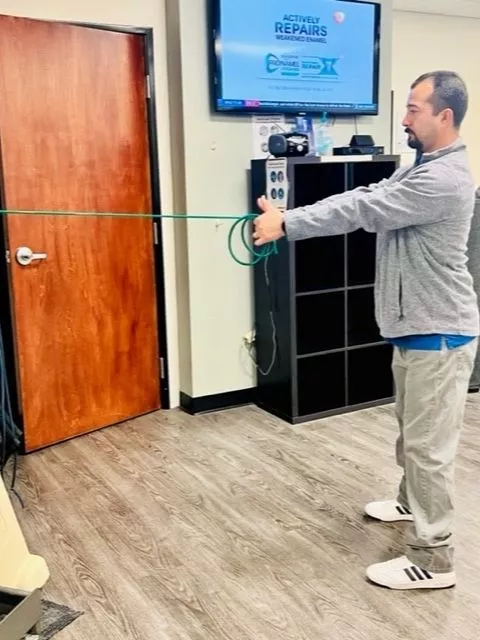
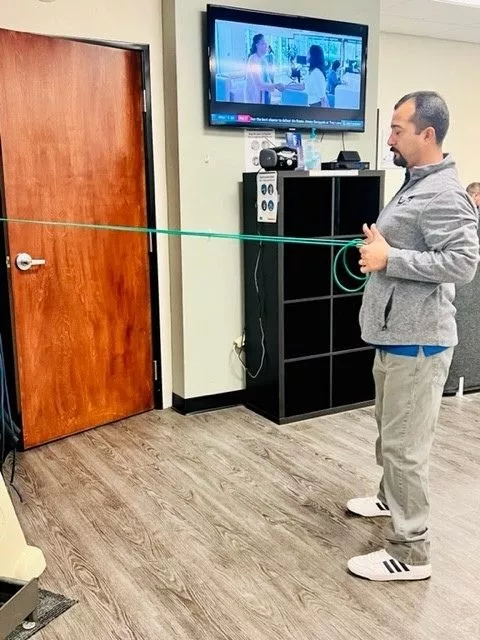
Scapular retraction with external rotation
Grab the band with a palms-down grip, as pictured below. This move is a little tricky, until you try it a few times. Pull your shoulder blades together while simultaneously pulling the band apart in an arc (see end position below).
It is helpful to try and imagine grabbing a pencil between your shoulder blades. Relax and return to the start position. Repeat for up to three sets of 10.
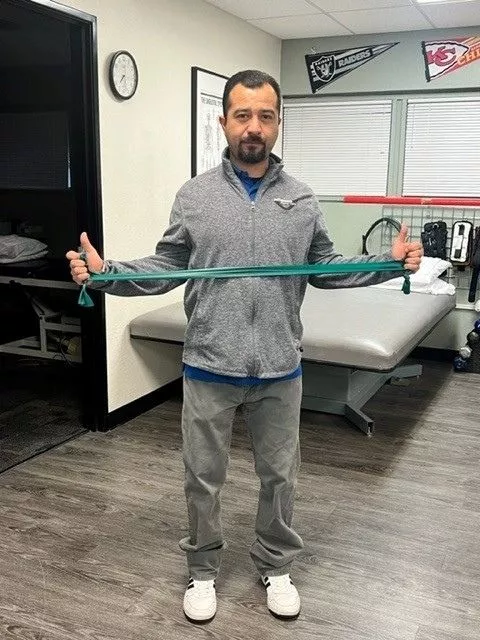
If you continue having pain – next steps
If you complete these and don’t find pain relief within a few sessions, please consult with your physical therapist or doctor to address possible contributing symptoms. Seeking medical advice can really help because we can objectively look at your symptoms to develop a plan individualized to you. We can also address lifestyle factors to prevent neck pain in the future. We’re also happy to complete your physical therapy treatment if you need it.

